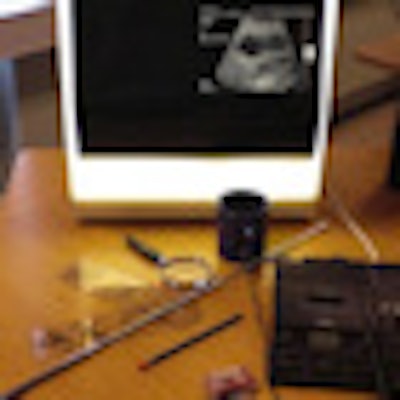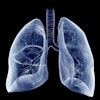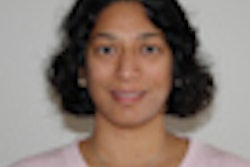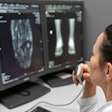
The workflow of radiologists has completely changed over the past 10 years or so. With speech recognition, radiologists are simultaneously diagnosticians and secretaries -- for better or worse. Administrators who happily downsized departments, getting rid of secretaries and archivists, have found themselves hiring IT staff to oversee the PACS.
On a microlevel, working with PACS is simply wonderful. I still remember the age of film and the lightbox -- waiting at least an hour for older exams to be brought to you from archives before finalizing the report, marking the films with a soft pencil, looking for a ruler and a magnifier, accepting that an exam was "lost," and the horror of reporting the exam of the wrong patient.
 Only the coffee cup has survived the transition to PACS; all other tools are now history. All images courtesy of Dr. Anagha Parkar.
Only the coffee cup has survived the transition to PACS; all other tools are now history. All images courtesy of Dr. Anagha Parkar.
PACS does have its flaws, of course. Images and reports regularly get stuck or "misplaced" in cyberspace. Reports that should be returned to Dr. X are returned to Dr. Y, or worse -- are not returned at all. The system does not run itself, and one has to manually keep tabs on it, contrary to the "picture perfect" presentation of PACS. A radiologist can still report exams of the wrong patient, but only if the radiographer has imaged the wrong patient. Images can still be lost, if the system loses contact with the archive server. And the 20-second wait for that previous chest x-ray is especially grueling.
Norway was one of the first countries to introduce PACS in radiology departments across the nation. Experimenting with the digital exchange of images between hospitals started as early as the 1990s in Northern Norway because the area is sparsely populated and there was a chronic shortage of radiologists in the smaller, rural hospitals. The first hospitals to introduce full PACS were in Tønsberg and Telemark in 1997/1998.1
By the start of the new millennium, all the major departments had begun to introduce PACS. This coincided with the change in ownership of hospitals, from the 19 regional counties (fylker) to the state. The state officially took over the hospitals in 2002 and created five health regions, which were then divided into further groups. One of the state's demands was that hospitals should be able to send images between hospitals, especially from primary centers to secondary and tertiary centers. Hospitals within a group were forced to implement the same PACS in order to ease transfer between the centers.
In the Bergen area, four hospitals share one PACS. This has worked relatively well, considering the technical challenges involved. The best aspect is that when a patient is transferred from a local hospital to the tertiary hospital, doctors automatically have access to all images and reports. The RIS is also the same in the whole group, but we do not have access to the information there. The easy access to older examinations has definitely spared hundreds, if not thousands, of patients from additional radiation. Also, the flow of images and information helps when the patients return for follow-up.
 A radiologist working at a PACS console at Haraldsplass Diakonale Sykehus.
A radiologist working at a PACS console at Haraldsplass Diakonale Sykehus.
The forced cooperation did not always work well. In Oslo, several different hospitals introduced their own PACS, according to the divisions created in 2001. This is now very challenging as a fusion of four hospitals in Oslo was pushed through last year by the government.2 Currently the radiology department in Oslo has four different PACS.
By 2005 the whole country had switched to PACS, and many specialists have never seen a film or remember the challenges before going digital. In theory, it is now possible to send images across the entire health region via a few connecting departments. For instance, exams may be sent from Stavanger to Bergen, and then from Bergen to Førde. The Norwegian Data Protection Agency has complained about the free flow of images between separate hospitals, because of privacy concerns, and stricter rules will be implemented as soon as the systems are upgraded, but doctors will still have access to all images for a current patient for a limited time period.
In the future, even today's systems will seem archaic. Film served radiologist well for 90 years. PACS in its current form will not last that long, and I think we should enjoy its advantages as long as we can.
References
- www.kith.no
- "Norwegian radiologists face increasing uncertainty, disruption." AuntMinnieEurope.com, 25 March 2011. http://www.auntminnieeurope.com/index.aspx?sec=nws&sub=rad&pag=dis&ItemID=604955.
Dr. Anagha Parkar is a radiologist at Haraldsplass Diakonale Sykehus, Bergen, Norway. She is also a member of AuntMinnieEurope.com's Editorial Advisory Board.
The comments and observations expressed herein do not necessarily reflect the opinions of AuntMinnieEurope.com, nor should they be construed as an endorsement or admonishment of any particular vendor, analyst, industry consultant, or consulting group.



















